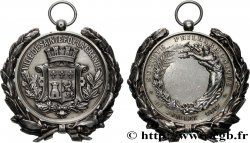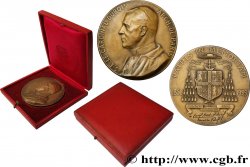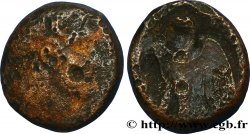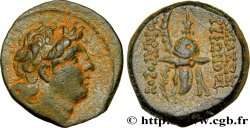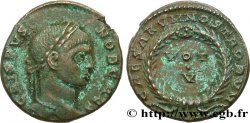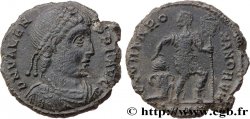Live auction - fme_425574 - TERZA REPUBBLICA FRANCESE Cadre de 45 médailles unifaces en bronze
Devi Sign-in ed essere un offerente approvato fare un'offerta, Login per fare offerte. Conti sono soggetti ad approvazione e di approvazione sono raggiunti entro 48 ore. Non aspettare fino al giorno di una vendita si chiude per registrarti.Confermando la tua offerta su questo oggetto ti impegni ad un contratto legalmente vincolante per l'acquisto di questo prodotto e fare clic su «offerta» costituisce accettazione dei termini di utilizzo de live auctions cgb.fr.
Offerta deve essere collocato in euro gli importi interi vendita only.The si chiuderà al momento sulla descrizione dell'oggetto, eventuali offerte pervenute al sito dopo l'orario di chiusura non verranno eseguite. Volte transmition possono variare e le offerte potrebbero essere respinto se si attende per gli ultimi secondi. Per ulteriori informazioni ckeck le FAQ Live auction.
Le offerte vincenti saranno sottomesse ai 18% per spese di compartecipazione alla vendita.
Le offerte vincenti saranno sottomesse ai 18% per spese di compartecipazione alla vendita.
| Valutazione : | 2 000 € |
| Prezzo : | 920 € |
| Offerta maxima : | 1 259 € |
| Data di fine vendita : | 01 agosto 2017 19:24:49 |
| partecipanti : | 2 partecipanti |
Tipo : Cadre de 45 médailles unifaces en bronze
Data: n.d.
Nome della officina / città: France
Metallo : bronzo
Grado di rarità : R3
Commenti sullo stato di conservazione:
Cadre imposant de 80 par 54 cm, avec 45 médailles unifaces encadrées anciennement, avec 20 cabochons en plâtre doré, sur un velours bordeaux. Cadre en bois, d’aspect loupe et doré. Cadre nécessitant une restauration, cabochons abîmés
Pedigree :
Ce cadre provient d’une collection américaine
Diritto
Rovescio
Commento
Ensemble particulièrement intéressant, de 45 médailles, montées anciennement sur velours. Ce travaille typique de la 3e République remonte à la fin du XIXe siècle ou au début du XXe siècle :
- Martinus Bucerus (1491-1551), moine et théologien.
- Maria Christina de Bourbon (1806-1878), reine d’Espagne, épouse de Ferdinand VII d’Espagne.
- Franz Joseph Haydnn (1732-1809), compositeur autrichien qui incarne le classicisme viennois au même titre que Mozart et Beethoven, les trois compositeurs étant regroupés par la postérité sous le vocable de « trinité classique viennoise ».
- Lazare Hoche (1768-1797), un général français de la Révolution.
- République française, avec la tête de Cérès.
- Philippe, roi d’Espagne.
- Jean Varin (1607-1672), graveur de monnaies et médailleur.
- Louis-Philippe, de 1830.
- Henri de la Tour d’Auvergne de Turenne (1611-1675), militaire français.
- Franklin Benjamin (1706-1790) et Montyon Jean-Baptiste (1733-1820).
- LA RENOMMÉE PROCLAME LE MÉRITE.
- Louis II de Bourbon Conde (1621-1686), duc d’Enghien.
- Naissance du futur comte de Chambord (Henri V), le 29 septembre 1820.
- Charles Quint (1500-1585).
- Pie IX (1792-1878), pape.
- Pierre Jeannin (1540-1623), homme politique français.
- Jules Hardouin-Mansart (1646-1708).
- Napoléon Ier Empereur.
- Isabelle II, reine d’Espagne (1830-1868).
- Jean-Baptiste Collin, comte de Sussy (1750-1826).
- Eugène Sue (1804-1857), écrivain français.
- Car Comes Chotek Reg Bohemiae Supremus Burgravius.
- Une représentation des indiens d’Amérique datée 1492.
- Giuseppe Garibaldi (1807-1882), l’un des “pères de la patrie” italienne.
- Notre Dame de Paris.
- République française, avec la tête de Cérès.
- Naissance du futur comte de Chambord (Henri V), le 29 septembre 1820.
- Armand Jean du Plessis de Richelieu, dit le cardinal de Richelieu (1585-1642).
- Napoléon III Empereur.
- Clément Marot (1496-1544), poète français.
- Axel Gustafsson Oxenstierna ou Oxenstjerna (1583-1654), Grand chancelier de Suède du 6 janvier 1612 à sa mort.
- Louis-Philippe Ier.
- Galilée (1564-1642), mathématicien, géomètre, physicien et astronome italien.
- Eustache Le Sueur (1617-1655), artiste peintre et dessinateur français de style baroque.
- la sculptue de H. Rude, Le Départ des volontaires de 1792, ou La Marseillaise, orne l’arc de triomphe de l'Étoile, à Paris.
- Pierre Corneille (1606-1684), dramaturge et poète français.
- Henri IV (1553-1610), roi de France.
- Miguel de Cervantes Saavedra (1547-1616), romancier, poète et dramaturge espagnol, célèbre pour son roman L’Ingénieux Hidalgo Don Quichotte de la Manche, publié en 1605 et reconnu comme le premier roman moderne.
- Bonaparte, général en chef..
Particularly interesting set of 45 medals, formerly mounted on velvet. This work, typical of the Third Republic, dates back to the end of the 19th century or the beginning of the 20th century: - Martinus Bucerus (1491-1551), monk and theologian.
- Maria Christina of Bourbon (1806-1878), Queen of Spain, wife of Ferdinand VII of Spain.
- Franz Joseph Haydn (1732-1809), Austrian composer who embodies Viennese classicism in the same way as Mozart and Beethoven, the three composers being grouped by posterity under the term \\\"Viennese classical trinity\\\".
- Lazare Hoche (1768-1797), a French general of the Revolution.
- French Republic, with the head of Ceres.
- Philip, King of Spain.
- Jean Varin (1607-1672), coin engraver and medalist.
- Louis-Philippe, from 1830.
- Henri de la Tour d'Auvergne de Turenne (1611-1675), French soldier.
- Franklin Benjamin (1706-1790) and Montyon Jean-Baptiste (1733-1820).
- FAME PROCLAIMS MERIT.
- Louis II of Bourbon Conde (1621-1686), Duke of Enghien.
- Birth of the future Count of Chambord (Henry V), September 29, 1820.
- Charles V (1500-1585).
- Pius IX (1792-1878), pope.
- Pierre Jeannin (1540-1623), French politician.
- Jules Hardouin-Mansart (1646-1708).
- Napoleon I Emperor.
- Isabella II, Queen of Spain (1830-1868).
- Jean-Baptiste Collin, Count of Sussy (1750-1826).
- Eugène Sue (1804-1857), French writer.
- Car Comes Chotek Reg Bohemiae Supremus Burgravius.
- A representation of American Indians dated 1492.
- Giuseppe Garibaldi (1807-1882), one of the Italian “fathers of the fatherland”.
- Notre Dame de Paris.
- French Republic, with the head of Ceres.
- Birth of the future Count of Chambord (Henry V), September 29, 1820.
- Armand Jean du Plessis de Richelieu, known as Cardinal Richelieu (1585-1642).
- Napoleon III Emperor.
- Clément Marot (1496-1544), French poet.
- Axel Gustafsson Oxenstierna or Oxenstjerna (1583-1654), Great Chancellor of Sweden from January 6, 1612 to his death.
- Louis-Philippe I.
- Galileo (1564-1642), Italian mathematician, geometer, physicist and astronomer.
- Eustache Le Sueur (1617-1655), French painter and designer in the Baroque style.
- the sculpture of H. Rude, The Departure of the Volunteers of 1792, or La Marseillaise, adorns the Arc de Triomphe de l'Étoile in Paris.
- Pierre Corneille (1606-1684), French playwright and poet.
- Henry IV (1553-1610), King of France.
- Miguel de Cervantes Saavedra (1547-1616), Spanish novelist, poet and playwright, famous for his novel The Ingenious Gentleman Don Quixote of La Mancha, published in 1605 and recognized as the first modern novel.
- Bonaparte, general in chief.
- Martinus Bucerus (1491-1551), moine et théologien.
- Maria Christina de Bourbon (1806-1878), reine d’Espagne, épouse de Ferdinand VII d’Espagne.
- Franz Joseph Haydnn (1732-1809), compositeur autrichien qui incarne le classicisme viennois au même titre que Mozart et Beethoven, les trois compositeurs étant regroupés par la postérité sous le vocable de « trinité classique viennoise ».
- Lazare Hoche (1768-1797), un général français de la Révolution.
- République française, avec la tête de Cérès.
- Philippe, roi d’Espagne.
- Jean Varin (1607-1672), graveur de monnaies et médailleur.
- Louis-Philippe, de 1830.
- Henri de la Tour d’Auvergne de Turenne (1611-1675), militaire français.
- Franklin Benjamin (1706-1790) et Montyon Jean-Baptiste (1733-1820).
- LA RENOMMÉE PROCLAME LE MÉRITE.
- Louis II de Bourbon Conde (1621-1686), duc d’Enghien.
- Naissance du futur comte de Chambord (Henri V), le 29 septembre 1820.
- Charles Quint (1500-1585).
- Pie IX (1792-1878), pape.
- Pierre Jeannin (1540-1623), homme politique français.
- Jules Hardouin-Mansart (1646-1708).
- Napoléon Ier Empereur.
- Isabelle II, reine d’Espagne (1830-1868).
- Jean-Baptiste Collin, comte de Sussy (1750-1826).
- Eugène Sue (1804-1857), écrivain français.
- Car Comes Chotek Reg Bohemiae Supremus Burgravius.
- Une représentation des indiens d’Amérique datée 1492.
- Giuseppe Garibaldi (1807-1882), l’un des “pères de la patrie” italienne.
- Notre Dame de Paris.
- République française, avec la tête de Cérès.
- Naissance du futur comte de Chambord (Henri V), le 29 septembre 1820.
- Armand Jean du Plessis de Richelieu, dit le cardinal de Richelieu (1585-1642).
- Napoléon III Empereur.
- Clément Marot (1496-1544), poète français.
- Axel Gustafsson Oxenstierna ou Oxenstjerna (1583-1654), Grand chancelier de Suède du 6 janvier 1612 à sa mort.
- Louis-Philippe Ier.
- Galilée (1564-1642), mathématicien, géomètre, physicien et astronome italien.
- Eustache Le Sueur (1617-1655), artiste peintre et dessinateur français de style baroque.
- la sculptue de H. Rude, Le Départ des volontaires de 1792, ou La Marseillaise, orne l’arc de triomphe de l'Étoile, à Paris.
- Pierre Corneille (1606-1684), dramaturge et poète français.
- Henri IV (1553-1610), roi de France.
- Miguel de Cervantes Saavedra (1547-1616), romancier, poète et dramaturge espagnol, célèbre pour son roman L’Ingénieux Hidalgo Don Quichotte de la Manche, publié en 1605 et reconnu comme le premier roman moderne.
- Bonaparte, général en chef..
Particularly interesting set of 45 medals, formerly mounted on velvet. This work, typical of the Third Republic, dates back to the end of the 19th century or the beginning of the 20th century: - Martinus Bucerus (1491-1551), monk and theologian.
- Maria Christina of Bourbon (1806-1878), Queen of Spain, wife of Ferdinand VII of Spain.
- Franz Joseph Haydn (1732-1809), Austrian composer who embodies Viennese classicism in the same way as Mozart and Beethoven, the three composers being grouped by posterity under the term \\\"Viennese classical trinity\\\".
- Lazare Hoche (1768-1797), a French general of the Revolution.
- French Republic, with the head of Ceres.
- Philip, King of Spain.
- Jean Varin (1607-1672), coin engraver and medalist.
- Louis-Philippe, from 1830.
- Henri de la Tour d'Auvergne de Turenne (1611-1675), French soldier.
- Franklin Benjamin (1706-1790) and Montyon Jean-Baptiste (1733-1820).
- FAME PROCLAIMS MERIT.
- Louis II of Bourbon Conde (1621-1686), Duke of Enghien.
- Birth of the future Count of Chambord (Henry V), September 29, 1820.
- Charles V (1500-1585).
- Pius IX (1792-1878), pope.
- Pierre Jeannin (1540-1623), French politician.
- Jules Hardouin-Mansart (1646-1708).
- Napoleon I Emperor.
- Isabella II, Queen of Spain (1830-1868).
- Jean-Baptiste Collin, Count of Sussy (1750-1826).
- Eugène Sue (1804-1857), French writer.
- Car Comes Chotek Reg Bohemiae Supremus Burgravius.
- A representation of American Indians dated 1492.
- Giuseppe Garibaldi (1807-1882), one of the Italian “fathers of the fatherland”.
- Notre Dame de Paris.
- French Republic, with the head of Ceres.
- Birth of the future Count of Chambord (Henry V), September 29, 1820.
- Armand Jean du Plessis de Richelieu, known as Cardinal Richelieu (1585-1642).
- Napoleon III Emperor.
- Clément Marot (1496-1544), French poet.
- Axel Gustafsson Oxenstierna or Oxenstjerna (1583-1654), Great Chancellor of Sweden from January 6, 1612 to his death.
- Louis-Philippe I.
- Galileo (1564-1642), Italian mathematician, geometer, physicist and astronomer.
- Eustache Le Sueur (1617-1655), French painter and designer in the Baroque style.
- the sculpture of H. Rude, The Departure of the Volunteers of 1792, or La Marseillaise, adorns the Arc de Triomphe de l'Étoile in Paris.
- Pierre Corneille (1606-1684), French playwright and poet.
- Henry IV (1553-1610), King of France.
- Miguel de Cervantes Saavedra (1547-1616), Spanish novelist, poet and playwright, famous for his novel The Ingenious Gentleman Don Quixote of La Mancha, published in 1605 and recognized as the first modern novel.
- Bonaparte, general in chief.







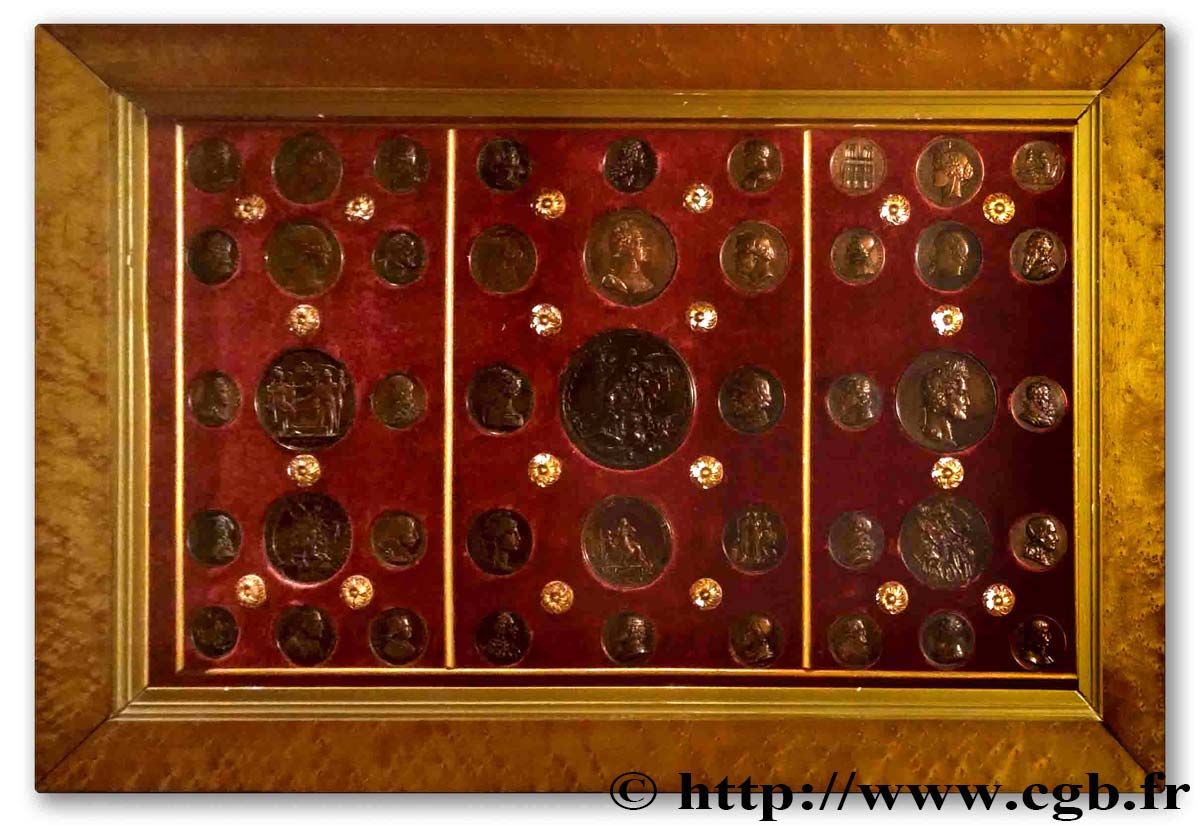
 Segnalare un errore
Segnalare un errore Stampate la pagina
Stampate la pagina Condividi mia selezione
Condividi mia selezione Fai una domanda
Fai una domanda Consegnare / vendere
Consegnare / vendere
 Descrittivo
Descrittivo